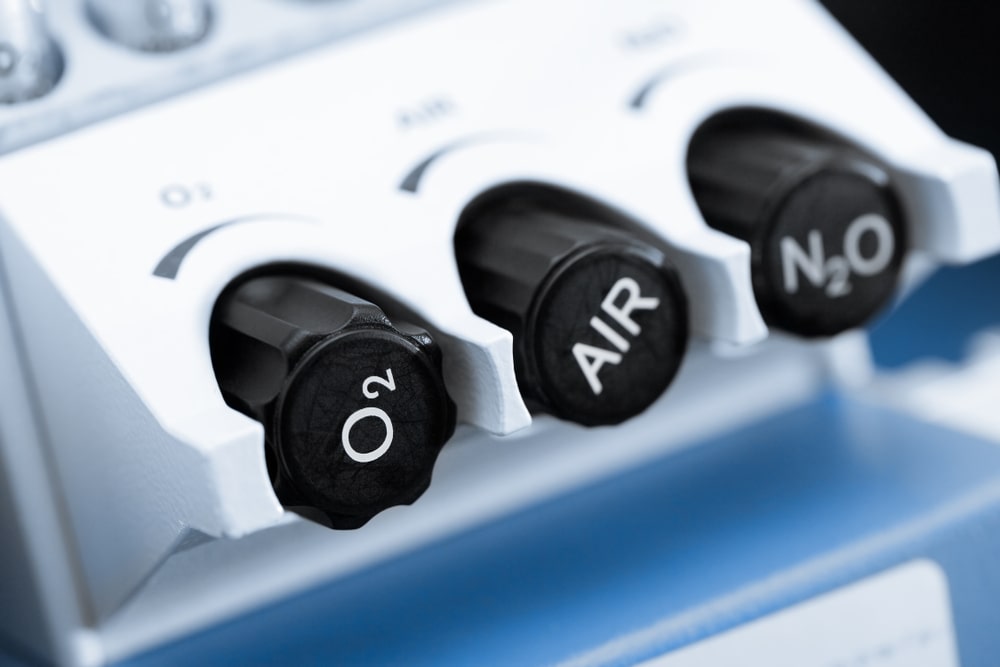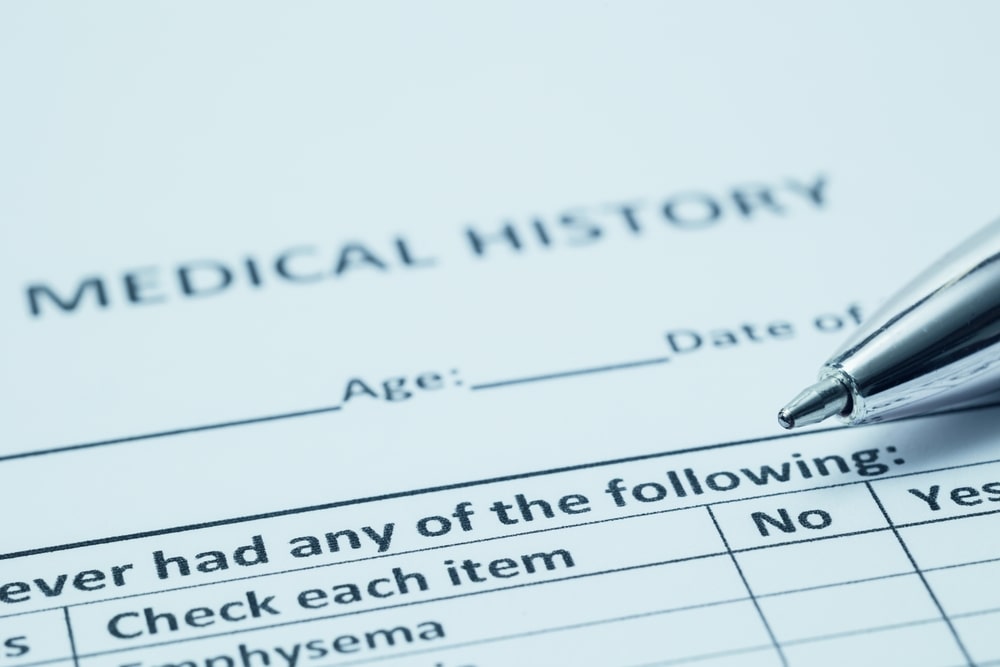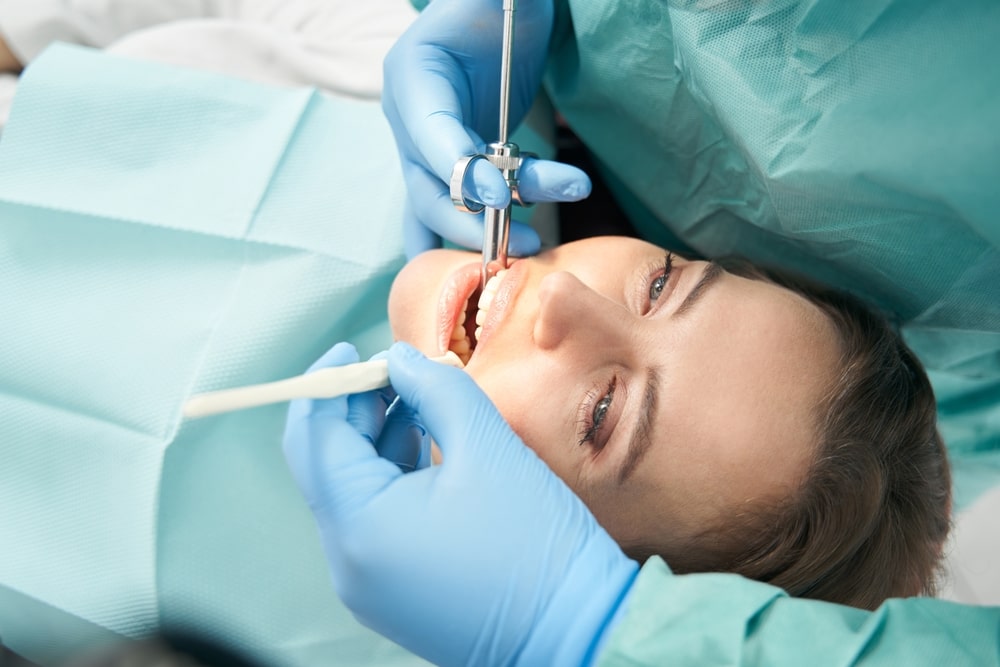Ever felt that familiar knot of anxiety in your stomach before a dental appointment? You’re not alone. For many in Markham and beyond, the thought of a dental procedure, whether a routine cleaning or a more complex treatment, can bring feelings of unease or even dread. But what if you could transform that experience into one of calm and comfort? Dental sedation offers a pathway to a more relaxed and positive visit, ensuring your oral health doesn’t take a backseat to anxiety. At Bur Oak Dental, we believe that understanding your options is the first step toward a truly comfortable experience.
This guide will take you through a detailed comparison of two popular sedation methods – nitrous oxide and oral sedation – helping you understand their differences, how they work, and which might be the best fit for your unique needs.
Understanding Dental Sedation: The Basics
Sedation dentistry, often called “sleep dentistry” (though you’re usually awake), uses medication to help you relax during dental procedures.
It’s designed to make your visit stress-free, reduce discomfort, and even help you forget the details of the procedure afterward.
The goal isn’t to put you completely to sleep, but rather to put you in a state of deep relaxation where anxiety melts away.
What is Nitrous Oxide? The “Laughing Gas” Experience
Nitrous oxide, commonly known as “laughing gas,” is perhaps the most well-known form of dental sedation. It’s a mild sedative that helps you feel relaxed, calm, and often a bit euphoric – hence the nickname!

How it’s administered: You simply breathe the nitrous oxide and oxygen mixture through a small mask placed over your nose. It’s safe, non-allergenic, and doesn’t irritate the respiratory system.
Immediate effects and how it feels: The effects kick in quickly, usually within minutes. You might feel light-headed, tingly, or a pleasant sensation of warmth throughout your body. Some people describe feeling disconnected or “floating.” While you’ll be fully conscious and able to respond to your dentist, the sensations of anxiety will significantly diminish.
Onset and offset: This is where nitrous oxide truly shines for its convenience. The effects begin almost immediately and disappear just as quickly once the mask is removed and you breathe pure oxygen for a few minutes. You can usually drive yourself home and resume normal activities right after your appointment.
A patient comfortably receiving nitrous oxide sedation through a nasal mask.
What is Oral Sedation? The “Pill” for Deeper Relaxation
Oral sedation involves taking a prescribed medication, usually in pill form, an hour or so before your dental appointment.
These medications typically belong to the benzodiazepine family (e.g., Valium, Halcion), designed to reduce anxiety and promote relaxation.
How it’s administered: You’ll simply swallow a pill at a predetermined time before your appointment, as directed by your dentist.
Deeper effects and how it feels: Oral sedation provides a deeper level of relaxation compared to nitrous oxide. You’ll likely feel very drowsy, heavy, and extremely calm. While you’ll still be conscious and able to respond, many patients have little to no memory of the procedure afterward. This is often referred to as “amnesia” and is a welcome benefit for those with significant dental phobia.
Onset and offset: The effects of oral sedation take longer to kick in, typically 30-60 minutes after taking the pill. Crucially, the effects also take much longer to wear off – often for several hours after your appointment. This means you must have a responsible adult drive you to and from your appointment and monitor you for a few hours afterward.
A Deeper Dive into Your Comfort Choice in Markham
Choosing between nitrous oxide and oral sedation isn’t a one-size-fits-all decision. It depends on several personal factors, from your level of anxiety to the specific dental work you need.
We’ll help you explore these considerations to make an informed choice with your Markham dental team.
Your Level of Dental Anxiety
- Mild Anxiety: If you just need a little something to take the edge off for routine procedures, nitrous oxide is often an excellent choice. It provides a gentle calm without making you feel out of control.
- Moderate to Severe Anxiety/Phobia: For those who feel significant fear, panic, or even phobia, oral sedation may be more appropriate. It offers a deeper state of relaxation and can help you get through procedures that would otherwise feel impossible. Many patients find the amnesic effect particularly beneficial.
Type and Length of Procedure
- Shorter, Less Invasive Procedures: For routine cleanings, simple fillings, or even
teeth whitening, nitrous oxide is usually sufficient. Its quick onset and offset make it ideal for appointments where you want to get back to your day promptly. - Longer, More Complex Procedures: If you’re undergoing
wisdom tooth removal,dental implants,crowns and bridges, orperiodontal (gum) therapy, where the procedure might be lengthy or more involved, oral sedation can provide sustained relaxation and comfort throughout.
Medical History and Contraindications

Your overall health plays a crucial role in determining the safest sedation option for you.
- Nitrous Oxide: Generally safe, but may not be recommended for pregnant women (especially in the first trimester), individuals with certain respiratory conditions (like severe COPD), or those with recent eye surgery involving a gas bubble.
- Oral Sedation: Your dentist will review your full medical history and current medications, as oral sedatives can interact with other drugs or be contraindicated for individuals with certain liver, kidney, or respiratory issues. It’s vital to be completely honest about your health.
Recovery Preferences
- Quick Return to Daily Life: If you need to drive yourself home, return to work, or care for children immediately after your appointment, nitrous oxide is the clear winner.
- Needing Assistance and Downtime: With oral sedation, you’ll need a designated driver and should plan to rest for the remainder of the day. Avoid operating machinery, making important decisions, or consuming alcohol.
Cost Implications
Generally, nitrous oxide tends to be less expensive per visit than oral sedation. The cost of sedation may or may not be covered by your dental insurance plan.
It’s always best to discuss pricing and insurance coverage directly with the Bur Oak Dental team during your free consulting.
Common Misconceptions Debunked
Let’s clear up some common myths about dental sedation:
- “Nitrous oxide knocks you out.” False! You remain fully conscious and able to respond to your dentist. It simply makes you feel calm and detached from the anxiety.
- “You’ll say anything under laughing gas.” While you might feel giggly or light-headed, you won’t lose control of your speech or actions. The effect is one of relaxation, not disinhibition.
- “Sedation is only for adults.” Absolutely not. Sedation is often safely used in pediatric dentistry to help children feel more comfortable and cooperative during treatment.
- “Sedation is dangerous.” When administered by trained professionals like the team at Bur Oak Dental, and after a thorough review of your medical history, both nitrous oxide and oral sedation are very safe.
Special Considerations
- Sedation for Children: Both nitrous oxide and some forms of oral sedation can be used for children. Nitrous oxide is particularly popular for kids due to its rapid onset and quick recovery, allowing them to return to school or activities quickly. For very anxious children or longer procedures, your dentist might recommend a mild oral sedative.
- Sedation for Patients with Special Needs: Sedation can be a valuable tool for patients with special needs, making dental care accessible and reducing distress. Your dentist will assess the best and safest approach based on the individual’s specific requirements.
- Combining Sedation Methods: In some specific cases, a dentist might use a combination of methods, such as a mild oral sedative for the journey to the clinic, followed by nitrous oxide during the procedure for enhanced comfort. This is always carefully decided by your dentist based on your individual needs and safety.
Real-World Scenarios and Informed Decisions
At Bur Oak Dental, we understand that every patient’s experience is unique. Our commitment to patient comfort is reflected in how we help patients choose the right sedation method.
Patient Comfort in Practice
While direct testimonials about sedation specifically aren’t always shared publicly, the overall patient experience at Bur Oak Dental highlights our dedication to comfort:
- “Very good place for kids and adults alike… My 3.5-year-old daughter was so comfortable and always excited to go back to them!” This illustrates our ability to create a welcoming and relaxing environment, even for our youngest patients, where the option of nitrous oxide can further enhance their experience.
- “Bur Oak Dental has been caring for my dental for years. Cindy is my dental hygienist. She’s very detail-oriented and diligent. I always feel great after seeing her in every visit.” This speaks to the trust and comfort patients feel with our team, which is paramount when discussing and receiving sedation.
The Consultation Process: Your Path to Comfort in Markham
The most crucial step in choosing your sedation option is an open and honest conversation with your dentist. During your consultation, be prepared to discuss:

- Your complete medical history and any medications you are taking.
- Your past experiences with dentistry and your current level of anxiety.
- The specific procedure you need and its expected duration.
- Your preferences for recovery and any scheduling constraints.
Based on this discussion, your Bur Oak Dental team will recommend the safest and most effective sedation method for your situation.
Preparing for Your Sedation Appointment
No matter which sedation method you choose, you’ll receive specific instructions from our team. Common pre-procedure guidelines might include:
- For Oral Sedation: Fasting for a certain period before your appointment, arranging for a responsible adult to drive you, and avoiding alcohol or certain medications.
- For Nitrous Oxide: No specific fasting is usually required, and you can generally drive yourself. However, it’s always wise to follow any specific advice from your dentist.
Your Next Steps Towards Anxiety-Free Dentistry
Understanding the differences between nitrous oxide and oral sedation empowers you to make informed choices about your dental care. Whether you need a gentle nudge of relaxation or a deeper sense of calm, there’s an option that can help you overcome dental anxiety. At Bur Oak Dental, with three convenient locations across Markham (Bur Oak Dental West, Central, and East), we are committed to providing a comfortable and welcoming environment for all our patients. We offer a comprehensive range of services, from addressing dental emergencies to cosmetic dentistry and invisalign all with your comfort in mind. Our massaging dental chairs and readily available sedation options are just a few ways we strive to make your visit as pleasant as possible.
Don’t let dental anxiety prevent you from achieving optimal oral health. We’re here to listen, educate, and help you find the comfort level that’s right for you.
Frequently Asked Questions About Dental Sedation
Q1: Is dental sedation safe?
A: Yes, when administered by trained and experienced dental professionals and after a thorough review of your medical history, both nitrous oxide and oral sedation are considered very safe. Your Bur Oak Dental team prioritizes your safety and comfort above all else.
Q2: Will I feel any pain with dental sedation?
A: Sedation itself doesn’t typically eliminate pain, but it helps you relax so deeply that you’re less bothered by the sensations. Local anesthetic will still be used to numb the area being treated, ensuring you don’t feel any sharp pain.
Q3: How long do the effects of oral sedation last?
A: The effects of oral sedation can last for several hours after your appointment. You will feel drowsy and should not drive or operate machinery for the rest of the day.
Q4: Can I eat before my appointment if I’m having sedation?
A: For oral sedation, you will typically be instructed to fast for several hours before your appointment to minimize the risk of nausea. For nitrous oxide, light meals are usually fine, but your dentist will provide specific instructions.
Q5: What procedures can use sedation?
A: Sedation can be used for almost any dental procedure, from routine cleanings (with nitrous oxide) to more extensive treatments like wisdom tooth removal, dental implants, jaw pain treatments, or even multiple crowns and bridges appointments. The choice of sedation depends on the procedure’s complexity and your anxiety level.
Q6: Can children receive dental sedation?
A: Yes, pediatric dentistry often incorporates sedation, particularly nitrous oxide, to help children feel relaxed and cooperative during their dental visits. Your dentist will determine the safest and most appropriate option for your child.
Q7: Will my insurance cover dental sedation?
A: Coverage for dental sedation varies widely depending on your specific insurance plan. It’s always best to check with your provider and discuss the costs and coverage details with the Bur Oak Dental administrative team before your appointment.
Q8: What if I’m still anxious even with sedation?
A: It’s rare for sedation not to work, especially when the dosage is appropriately managed. However, your Bur Oak Dental team is highly experienced and will continuously monitor your comfort level throughout the procedure. If you still feel anxious, they can adjust the nitrous oxide flow or take other steps to ensure your comfort. Your open communication is key!


